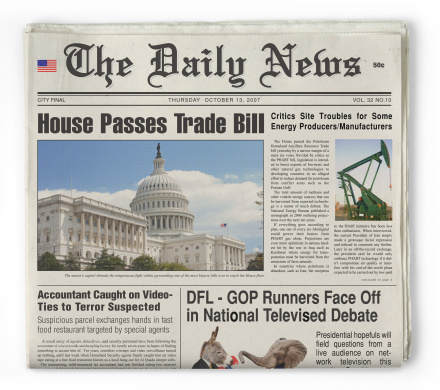Headlines are like first impressions – you don’t get a second chance to improve on that initial encounter.
And if your headline fails to resonate with the viewer and compel them to read the content that follows, they are lost forever.
The goal of every headline is to convince the viewer that they need to read the full content. The challenge is how to convey this urgency within the confines of a typical headline. Here are some key thoughts to keep in mind when writing headlines that stand the best chance of turning a surfer into a reader.
- Know Your Audience
It sounds trite, but knowing your what your audience needs is central to crafting an effective headline. In some cases, this will mean triggering an emotional response; or if writing for a scientific audience for instance, making use of the appropriate terminology within the headline will help provide the incentive to get the reader to continue beyond the headline.
- Consider SEO Impact
Search engine algorithms key on headlines when ranking pages. This means front-loading your content with high-value search terms in your headlines is critical for optimizing for search engines. There is a great deal of instruction and guidance available on how to build SEO-friendly content so there is no excuse for not getting this right.
- Solo Brainstorming
The story goes that when composing Mozart could “see” the finished composition in his mind and simply transposed complete, error-free scores in a single draft. Sadly, Whether true or not, there are few writers capable of producing content ready for publishing without going through multiple iterations.
It is a good idea to keep all your drafts until you arrive at your finished piece. Often times in an earlier version you may have a thought or phrase that with a little tweaking, works well in the final version. Think of your early drafts as your own personal brainstorming sessions.
- Testing and Metrics
Like any skill, your writing will improve over time and with practice. As such, you need to evaluate the effectiveness of your writing to learn what works well and to target areas in which you can improve.
Tools such as Hootsuite and the metrics provided by blog host providers can give you basic traffic and social interaction results. There are also predictive tools that you can use that will attempt to quantify the effectiveness of your content before you publish.
The Advanced Marketing Institute has what they call the Emotional Marketing Value Headline Analyzer that calculates the Emotional Marketing Value (EMV) of your headline. By the way, the headline for this article scored 60 on the EMV scale which is in the middle of the top range.
- Attract the “Right” Viewer
There is a difference between attracting any viewer and the right viewer. Padding your traffic numbers is one thing but presumably you are trying to influence, in some way, the behavior of your reader. In other words, you want them to do something as a result of reading your content and your success rate in accomplishing this is the true test of your headline.
To winnow out those viewers that are not your target, your headlines must be truthful and representative of the content that follows. Creating a headline that reads “How to Get Free Beer” might generate a lot traffic, but if your goal is to attract subscribers to a daily newsletter on financial market insights, you will likely have a very disappointing conversion rate.
Putting It All Together
Writing effective headlines is definitely a mash up of art and science and keeping these points in mind when crafting your headlines will help you get your content read. Of course, writing headlines can not be distilled down to just these five points; you will likely add or modify this list to match your specific goals. If reading this has caused you to think about how you can improve your headlines, then this article has accomplished its goal.

